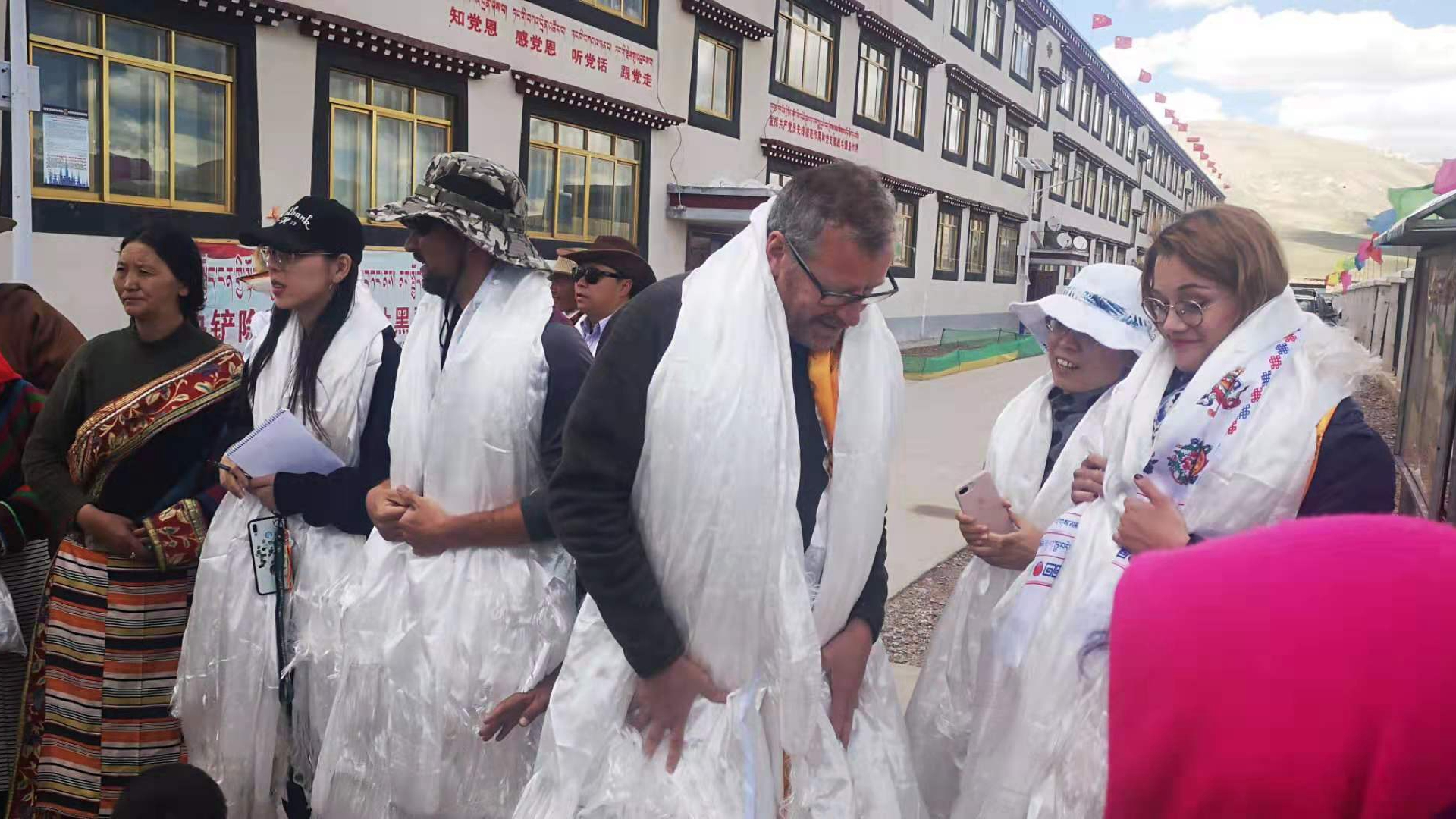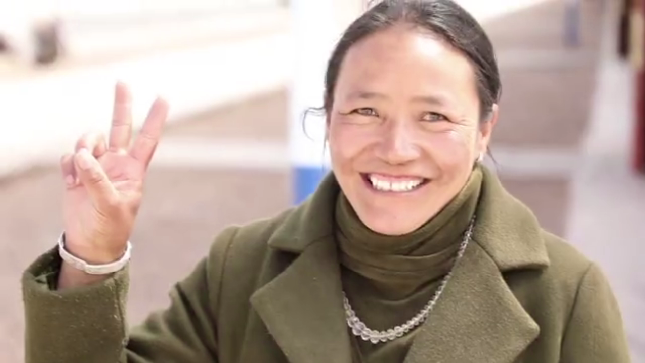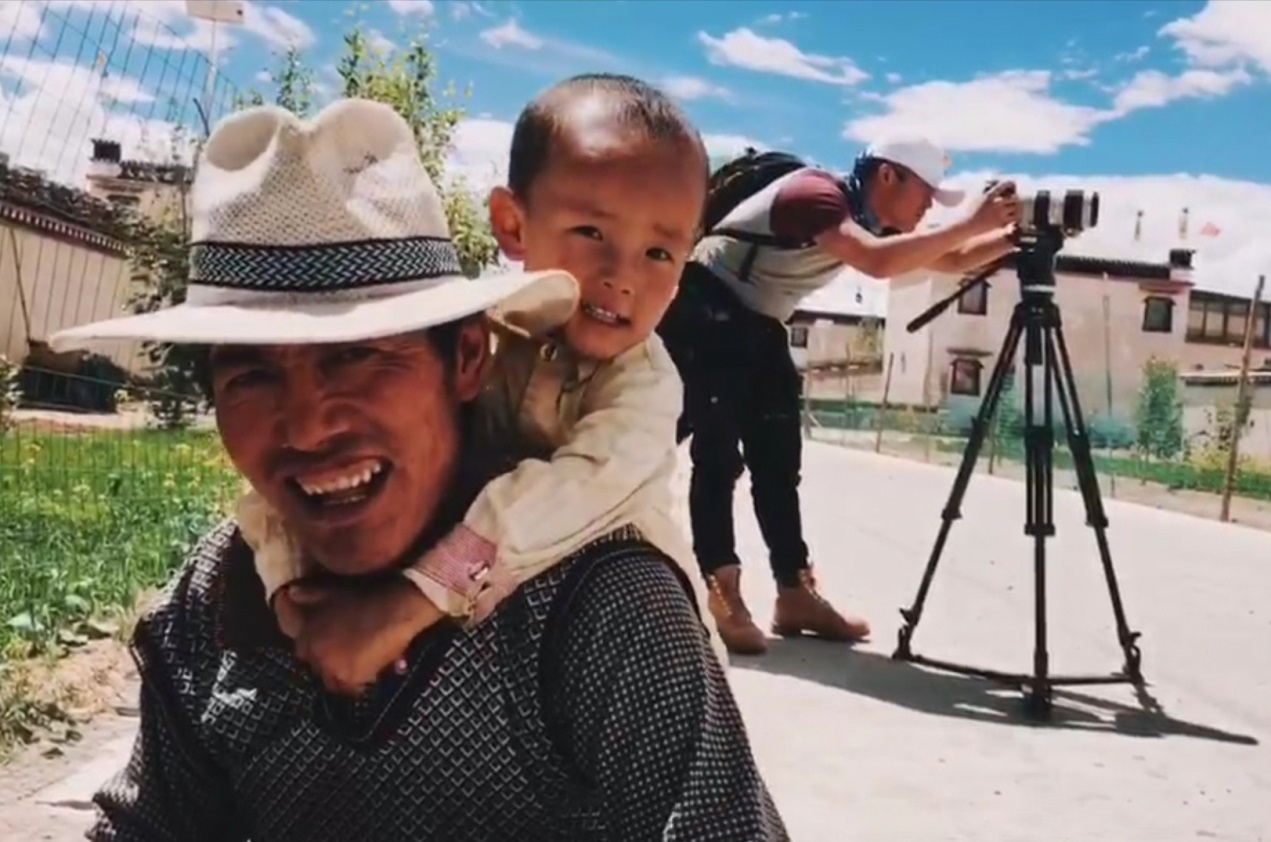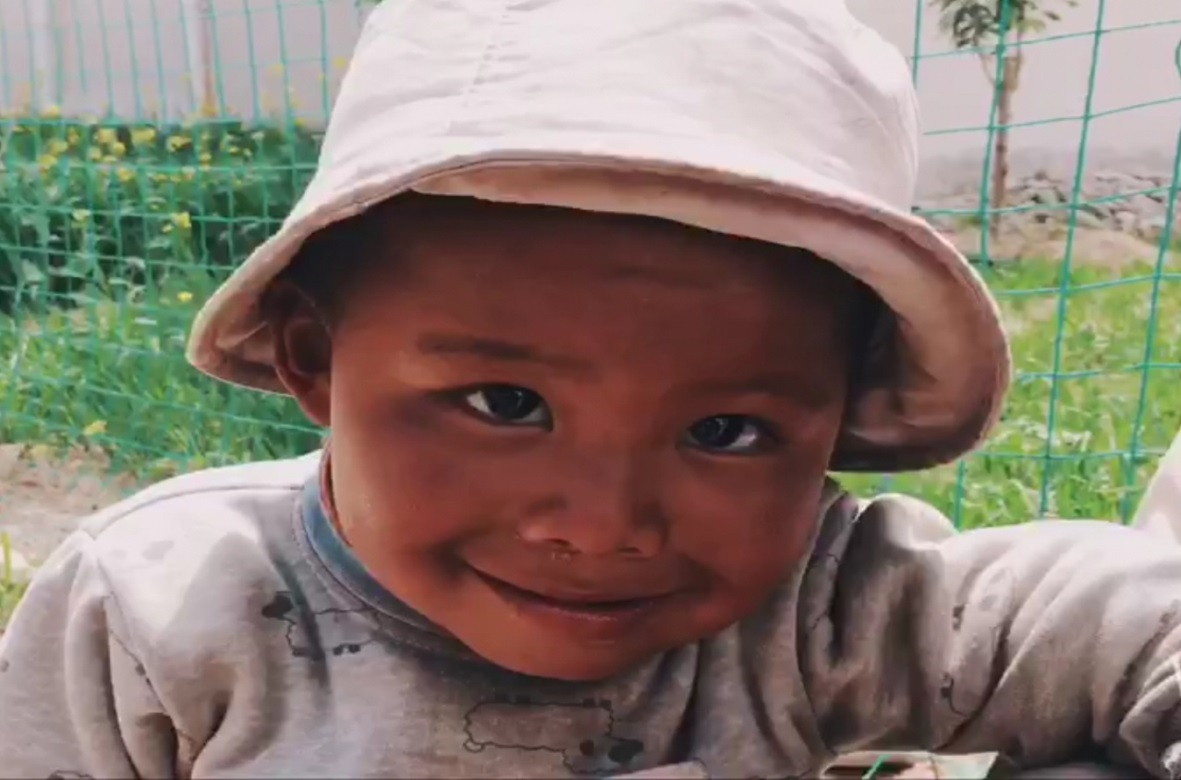

Reporter Sean Gallebs(C) and Cameraman Andrew Smith got many hadas from local residents in the Zhuo Ge community. /CGTN Photo
We were literately covered by hadas the minute we entered Zhuo Ge community in Ando County, Nagqu City in southwest China's Tibet Autonomous Region. Almost every resident came out to welcome us with their biggest smiles. Reporter Sean Gallebs and Cameraman Andrew Smith apparently got more than enough hospitality and hadas – the white long silk cloth given by Tibetans to show their respect to guests – to take back to DC.
The first thing you notice in the newly-built community away from the hustle and bustle of the famous tourist spots in Lhasa, the autonomous region's capital city, is a tranquil life and warmness from its residents.
Zhuo Ge community is one of the main poverty alleviation relocation projects in Nagqu area. Since January 1, 2018, the local government has provided new homes for 210 families, that's 861 people to be precise. People in poorer areas of the country applied voluntarily to be relocated to Zhuo Ge, and we got to meet one of them: Ozhu Lacuo.

Ozhu Lacuo, a relocated resident in the Zhuo Ge community in Ando County, Nagqu City in southwest China's Tibet Autonomous Region. /CGTN Photo
"Before the relocation, our family lived in a dilapidated adobe house with many children and few livestock. Live was hard. Later, I found out about the good policy of relocation to other places. I applied for it on my own initiative and came here with government assistance. The conditions have been greatly improved in many aspects," Lacuo said.
Lacuo recalled her old life when there was no clean drinking water. The small house never got warm enough no matter how much yak dung (dry animal manure used as fuel) she burned. Lacuo’s happiness living in Zhuo Ge is reflected in the decorations she made for the new house.

A resident with his child in Zhuo Ge community in Ando County, Nagqu City in southwest China's Tibet Autonomous Region. /CGTN Photo
Living in this community also brings people closer, said Lacuo. “After living in this community, I know many neighbors. We always help each other and I feel warm. In the past, when we were in the pastoral area, we lived far away from each other. There wasn't much communication among neighbors. We couldn't help each other even for minor illnesses or minor disasters," she noted. "Now everyone helps each other actively in many ways. Local officials also give a lot of help.”
The whole community would sing and dance every evening at the town square.

A boy smiles at the cameraman in Zhuo Ge community in Ando County, Nagqu City, southwest China's Tibet Autonomous Region. /CGTN Photo
The most important thing among the people we met during the trip to Tibet was education for their children. The same went for Lacuo. She gives up everything and works as much as she can to help send her children to school. Nowadays it's far more convenient to send their children to school.
After moving to Zhuo Ge, both she and her husband got jobs. They also run a motorbike repair shop in town.
Many others might still live in poverty, working the way their ancestors did. But the efforts to reduce poverty is ongoing, and giving people hope and a better life will continue to be the goal for local officials and Tibetan aid cadres.

Copyright © 2018 CGTN. Beijing ICP prepared NO.16065310-3
Copyright © 2018 CGTN. Beijing ICP prepared NO.16065310-3